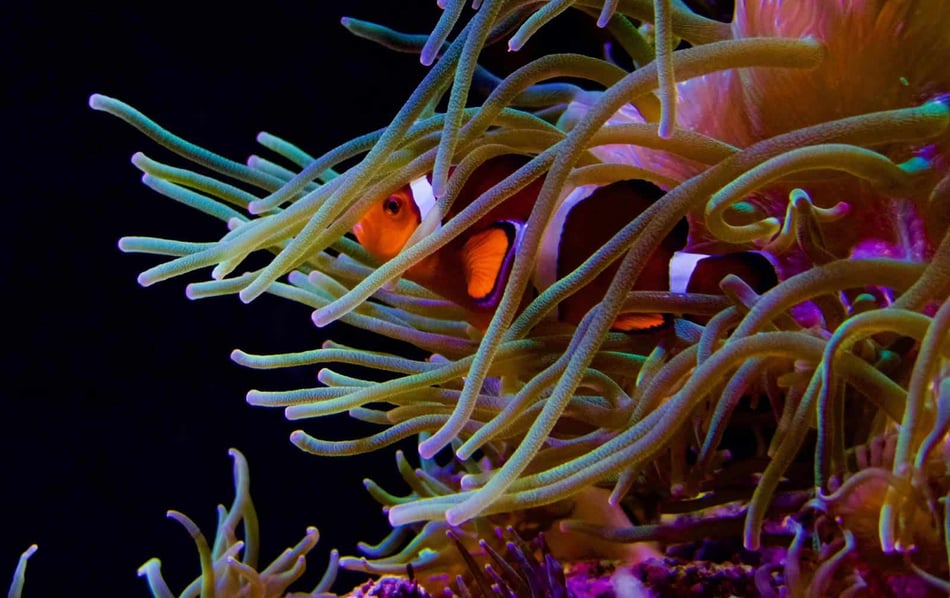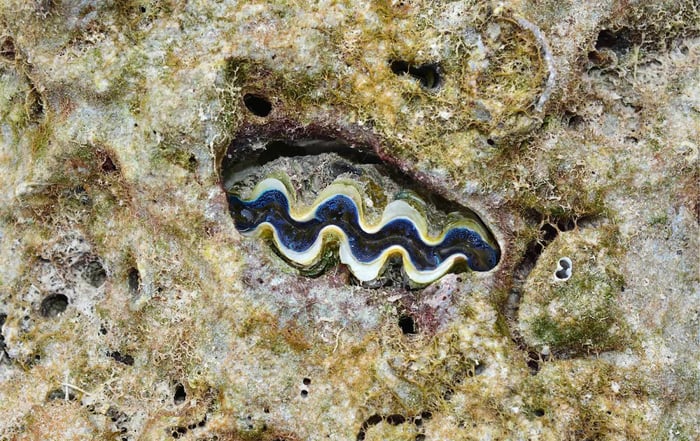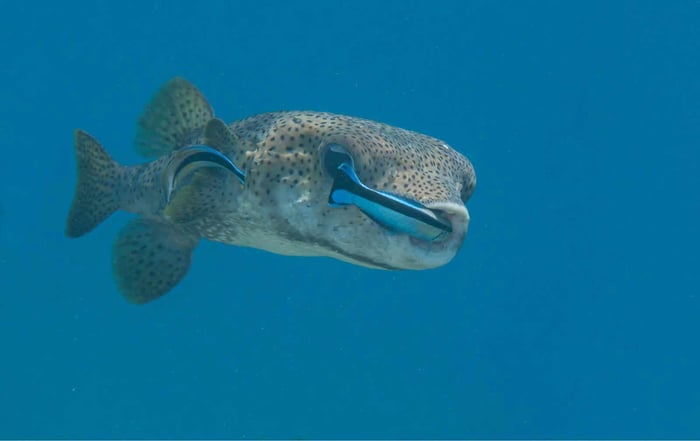It Takes Two: The Hidden Partnerships Powering Ocean Ecosystems

Tin
4
min. read

Symbiosis is a living testament to the concept of teamwork; at its core, it is a long-term interaction between different species in which at least one of the species cannot survive without the other. These special relationships are crucial for the survival and success of many organisms as a vital role in maintaining the stability and diversity of ecosystems.
In marine environments, symbiosis takes on even more significance. The ocean is a complex web of life, and many species rely on each other for various reasons, be it for protection, nutrition, or some other advantage. These symbiotic relationships help sustain the rich biodiversity of our oceans, and they can be a deciding factor in how resilient a marine ecosystem is to changes and threats.
Below we delve into some key examples of symbiotic relationships in the marine world, illustrating how these partnerships contribute to the well-being of our oceans.
In the ocean, every relationship counts.
In the ocean, every relationship counts.
What is Symbiosis?
There are three main types: mutualism, where both species benefit; commensalism, where one species benefits while the other is neither helped nor harmed; and parasitism, where one species benefits at the expense of the other.
Marine ecosystems are particularly rich in these kinds of symbiotic relationships, offering a diverse array of examples that range from coral and algae thriving together to cleaner fish taking parasites off larger fish.

Symbiotic Spotlight: Giant Clams and Zooxanthellae
One of the lesser-known yet highly significant symbiotic relationships in marine ecosystems involves giant clams and zooxanthellae algae. Similar to coral polyps, giant clams host these microscopic algae in their tissues.
The relationship between these creatures is mutualistic: the zooxanthellae provide the clams with vital nutrients through photosynthesis, essentially converting sunlight into food for the clam. This symbiosis is especially crucial for giant clams, which are often found in nutrient-poor waters where food is scarce. The algae provide them with an essential source of nutrition, allowing them to grow to their iconic large sizes.
In return, the clams offer the zooxanthellae a safe and protected environment to live in, rich with nutrients that the algae need for growth. Meanwhile, the zooxanthellae benefit from the clam's ability to filter and concentrate nutrients from the surrounding water, creating a more nutrient-rich environment for them to flourish.
Symbiotic Spotlight: Cleaner Fish and Hosts

Another fascinating example of marine symbiosis involves cleaner fish, such as cleaner wrasses, and their hosts, which include a variety of fish species and even some marine mammals.
Cleaner fish feed on parasites, dead skin, and other debris found on the bodies of their hosts. The cleaner fish get a steady source of nutrition while effectively "grooming" their hosts, keeping them free from harmful parasites and potential infections.
In return, the host fish provide a source of food for the cleaner fish, making it a win-win situation for both parties. In many cases, host fish will even line up at cleaning stations in coral reefs, waiting their turn to be cleaned. This interaction benefits not just individual fish, but also contributes to the overall health and balance of the marine ecosystem in which they reside.
Symbiotic Spotlight: Anemones and Clownfish
One of the most iconic symbiotic relationships in marine life is that between sea anemones and clownfish.
Sea anemones, with their venomous tentacles, offer a protective home for clownfish, who are immune to the venom thanks to a mucus layer on their skin. This unique adaptation allows clownfish to take refuge among the anemone's tentacles, safe from predators that dare not venture close to the venomous anemone. In return, clownfish bring in food scraps and attract potential prey to the anemone. They also help to keep the anemone clean by nibbling away dead tentacles and other debris.

The presence of clownfish even enhances water circulation around the anemone, aiding in respiration. This mutually beneficial relationship allows both species to thrive in an environment where resources can often be scarce or dangerous to obtain. The clownfish get a safe home and the anemones get better access to food, exemplifying how symbiotic relationships contribute to the intricate balance of marine ecosystems.
Why Symbiosis Matters in Marine Ecosystems
Symbiotic relationships play a crucial role in maintaining the delicate balance and overall health of marine ecosystems. These interactions ensure efficient resource utilization and foster biodiversity by allowing species to specialize in their roles within the community.
Disruptions to these symbiotic relationships can have a domino effect on the broader environment. If one species in a symbiotic pair declines due to environmental stressors, it jeopardizes the well-being of its partner, which in turn affects the species that rely on them. For instance, if sea anemones suffer, it impacts the clownfish that depend on them for protection, and this disruption can ripple through the food chain.
How the Symbiotic Collaboration of Giant Clams and Algae Benefits Us All
Understanding the symbiotic relationships in marine ecosystems, like the one between giant clams and zooxanthellae, has important implications for science and conservation. For instance, the mutualistic relationship between these clams and algae serves as an excellent model for nutrient exchange and energy efficiency. This knowledge can be utilized in sustainable aquaculture practices, potentially improving the health and yield of other cultivated marine species. In terms of conservation, understanding the vital role giant clams play in reef ecosystems can help prioritize their protection, especially as they contribute to reef building and biodiversity.
Symbiotic relationships in marine ecosystems illustrate a remarkable balance of mutual benefit, resilience, and interdependence. This harmonious coexistence serves as a guiding principle for IMARCS. Aligned with our mission and vision, we strive to create symbiotic relationships not just within marine ecosystems by pioneering innovative mariculture solutions through human endeavors and the ocean’s vast riches.
References:
AskNature. (n.d.). Asknature.org. Retrieved September 5, 2023, from https://asknature.org/strategy/intricate-relationship-allows-the-other-to-flourish/
Cleaner fish. (n.d.). Biomar.com. Retrieved September 5, 2023, from https://www.biomar.com/en/uk/products--species/cleaner-fish/
Coto, P. (2021, February 25). Giant clams share symbiotic algae with corals via poop. Oceanbites.org. https://oceanbites.org/giant-clams-share-symbiotic-algae-with-corals-via-poop/
Dimijian, G. G. (2000). Evolving together: The biology of symbiosis, part 1. Proceedings (Baylor University. Medical Center), 13(3), 217a–2226. https://doi.org/10.1080/08998280.2000.11927678
Mehta, S. (2019, July 26). Where do fish go for a spa? Mongabay-India. https://india.mongabay.com/2019/07/where-do-fish-go-for-a-spa/
Morishima, S.-Y., Yamashita, H., O-hara, S., Nakamura, Y., Quek, V. Z., Yamauchi, M., & Koike, K. (2019). Study on expelled but viable zooxanthellae from giant clams, with an emphasis on their potential as subsequent symbiont sources. PloS One, 14(7), e0220141. https://doi.org/10.1371/journal.pone.0220141
Sea anemone and clownfish: Behind the scenes of an iconic friendship. (2020, October 5). National Marine Sanctuary Foundation; Marine Sanctuary Foundation. https://marinesanctuary.org/blog/sea-anemone-and-clownfish-behind-the-scenes-of-an-iconic-friendship/
Seifert, D. D. (2022, December 13). The mutual benefits of ocean cleaning stations. DIVE Magazine. https://divemagazine.com/marine-life/the-mutual-benefits-of-ocean-cleaning-stations
Symbiosis: The art of living together. (n.d.). Nationalgeographic.org. Retrieved September 5, 2023, from https://education.nationalgeographic.org/resource/symbiosis-art-living-together/